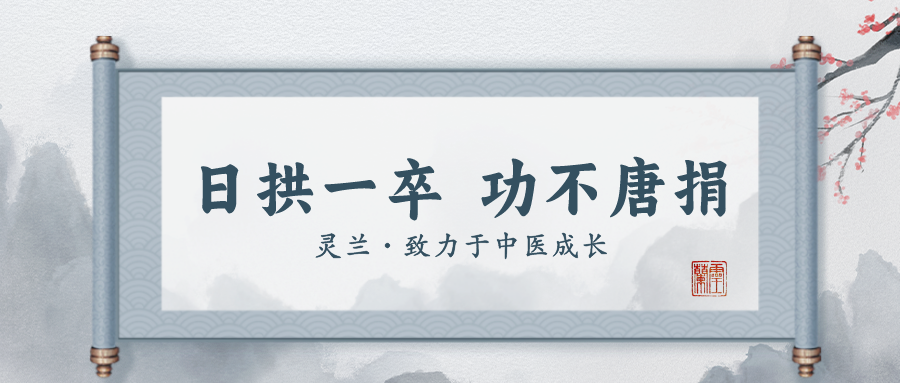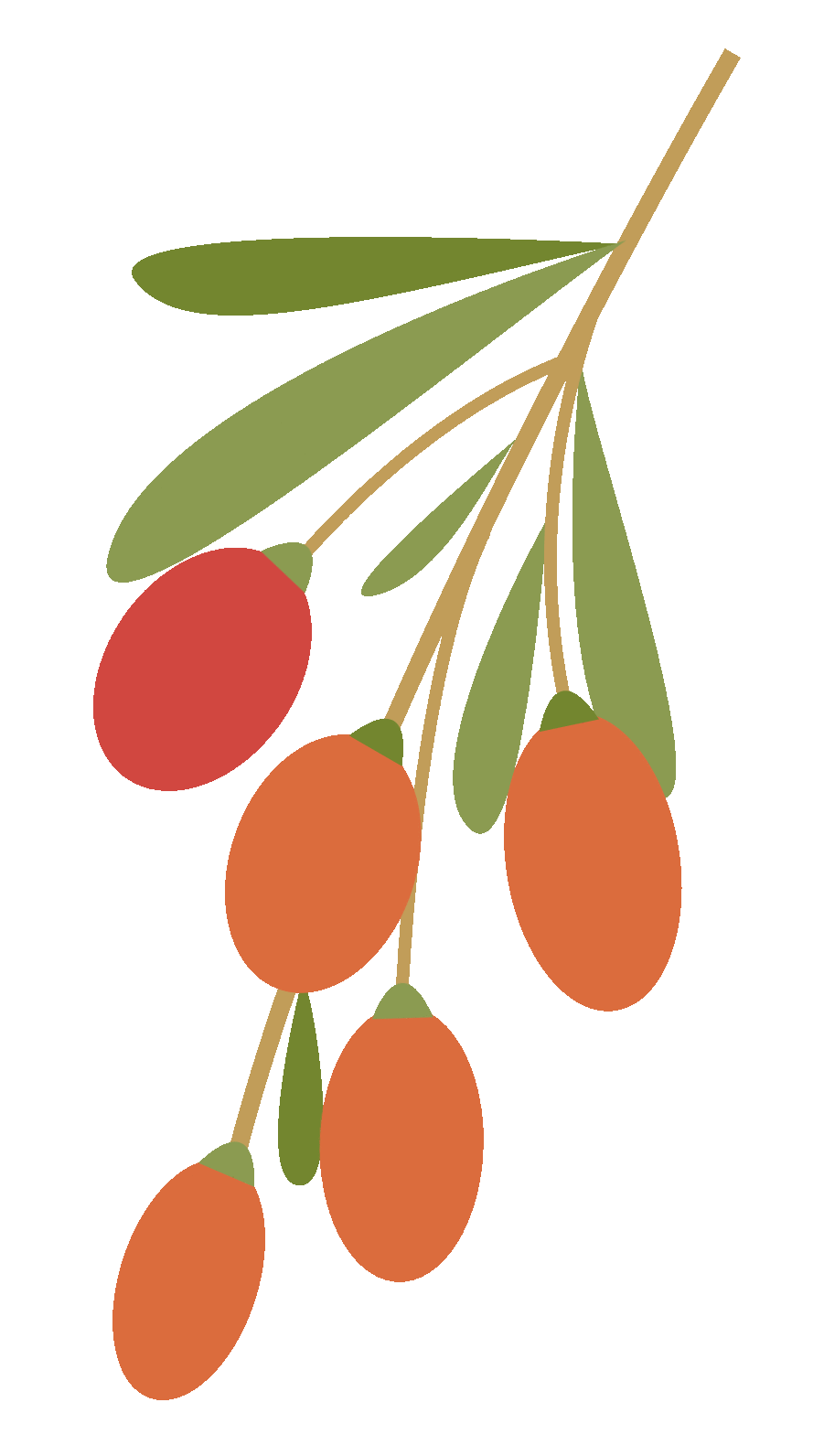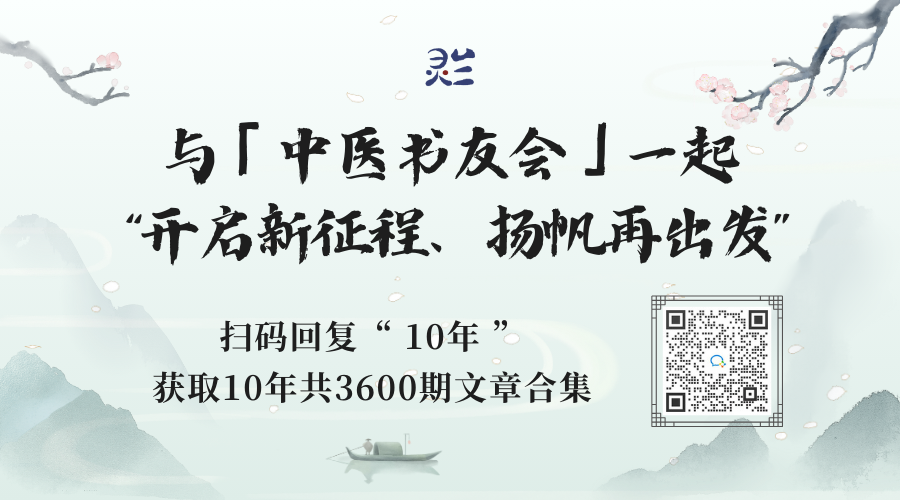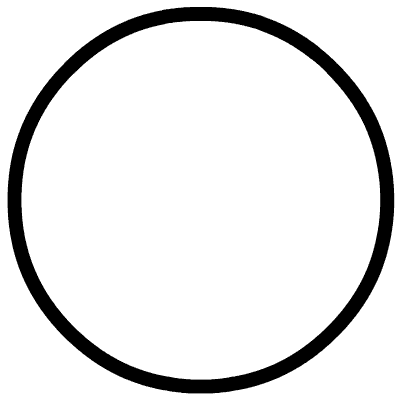

Chinese Medicine Book ClubIssue 3781One article daily, accompanying the growth of TCM practitioners
IIntroduction: This article on the wonderful uses of Codonopsis (Dang Shen) is essentially an art of supporting the righteous Qi. The application of Codonopsis must grasp the understanding of “deficiency”; some patients with external pathogenic high fever diseases do not resist the evil, while others with spleen and stomach deficiency produce phlegm and dampness obstruction. In these cases, one should not be limited by the notion of resisting evil; it is crucial to replenish the righteous Qi, which is the driving force. (Introduction by Yi Yi)
—This article is approximately4500words, expected reading time12minutes—

Brief Introduction: Sun Boyang (1926-2015), male, from Beijing. Early in his career, he studied TCM with Liu Qusheng, laying a solid foundation in the processing and identification of Chinese herbs. Later, he studied under the famous TCM master Zong Weixin in Beijing, gaining true transmission and significantly enhancing his medical skills, especially in treating internal medicine and geriatric diseases.
After the founding of the People’s Republic of China, he furthered his studies by entering the Beijing TCM Continuing Education School in 1950 to learn modern medical knowledge for three years. In 1960, he attended the Nanjing TCM College’s teacher training class. After graduation, he worked and taught at the Beijing TCM School, Beijing TCM Hospital, and Beijing University of Chinese Medicine. He held positions from physician to chief physician, served as a director of the Chinese Geriatrics Society, and was appointed as a guiding teacher for the academic experience inheritance of TCM experts in Beijing in 1990.
Mr. Sun engaged in TCM clinical practice for decades, accumulating rich practical experience and conducting in-depth research on geriatric diseases such as dizziness, hypertension, diabetes, and cerebrovascular diseases. He had unique insights and methods for treating hypertension and created characteristic Chinese patent medicines such as Qingnaopinggan Pian and Xingnaoyanshou Pian for treating different patterns of hypertension, achieving significant efficacy and being well-received by patients. Dr. Sun respected tradition but was not rigid, focusing on practical results, and was adept at summarizing. He engaged in clinical teaching for many years, generously sharing his knowledge and tirelessly training numerous talents, writing over 30 papers and compiling the book Selected Cases of Dizziness in the Elderly, which received praise from peers.↑Swipe to view the full introduction↑During my internship at the Beijing TCM Hospital, I observed Mr. Sun’s accurate pattern differentiation and flexible prescription practices, which greatly inspired me. Notably, his use of Codonopsis had many remarkable aspects.I paid close attention to his use of Codonopsis and consulted him about its properties and effects, realizing that Mr. Sun’s application of Codonopsis was quite unique.
Codonopsis is sweet and neutral in nature, and is one of the commonly used tonifying herbs in clinical practice. Its main functions are to tonify the middle and benefit Qi, as it can both tonify Qi and nourish blood, and is effective in treating various diseases of the spleen and stomach, suitable for conditions of both Qi and blood deficiency. The usual dosage of Codonopsis is 6-15g, but Mr. Sun often exceeded the conventional dosage, using 15g, 30g, or even 40g depending on the condition, achieving very significant results. Based on my observations, the application of Codonopsis can be summarized in the following seven aspects.
1. Supporting Righteous Qi to Expel External Evil
Patients with external pathogens generally recover through sweating and resolving the exterior, but many patients with a weak constitution who contract external pathogens often do not respond to various exterior-releasing herbs. When treating such patients, Mr. Sun also used Xiao Chai Hu Tang, where the usual dosages of Chai Hu and Huang Qin were maintained, but he increased the dosage of Codonopsis to 30g, leading to rapid recovery.
For example, Ms. Liu, 60 years old, had a cold for one month and did not improve after taking over ten doses of decoction, experiencing alternating chills and fever, general fatigue, and a slight cough.
Mr. Sun prescribed Xiao Chai Hu Tang with 30g of Codonopsis, 10g of Xing Ren, and 10g of Qian Hu, for three doses. After three days, during a follow-up, the patient reported that after taking two doses, her condition improved significantly, and she was completely cured after three doses. She continued with two more doses for good measure.
Additionally, Mr. Sun once treated a patient with “malaria.” Mr. Liu, male, 28 years old, was first diagnosed on March 15, 1983.
He reported experiencing recurrent high fever and sweating for 40 days. Half a month prior, he was hospitalized for “high fever” and diagnosed with malaria, treated with chloroquine and other antimalarial drugs, but with no effect after half a month.
The hospital doctors believed that continuing the medication would cause adverse reactions and suggested seeking TCM treatment.
After being referred, Mr. Sun diagnosed him with persistent high fever and chills, with symptoms including dry mouth, bitter taste, thirst, dry stools, poor appetite, pale complexion (with a history of blood disorders), fatigue, pale tongue with a slightly dark color, thin yellow coating, and a deep, thin, weak pulse (lab results showed hemoglobin at 10g/L and white blood cells at 1.7×10⁹/L).
Mr. Sun believed that this patient had a severe deficiency of righteous Qi and lacked the strength to expel the evil, thus he prescribed Xiao Chai Hu Tang with an increased dosage of Codonopsis.
Prescription:Chai Hu 15g, Huang Qin 10g, Ban Xia 12g, Gan Cao 8g, Codonopsis 30g, 3 slices of Sheng Jiang, 5 Da Zao, Hua Fen 15g, Quan Gua Lou 25g.Three doses, decocted in water, one dose per day.Second Diagnosis:Symptoms significantly reduced, body temperature dropped from 39°C to around 37°C. After night sweats, the patient had normal bowel movements, and his spirit improved, with reduced dry mouth. The tongue and pulse remained the same, and blood tests showed hemoglobin at 110g/L and white blood cells at 4.6×10⁹/L.He continued with the original prescription, removing Quan Gua Lou and Tian Hua Fen, adding 10g of Pin Lang and 12g of Bai Shao, for five doses.Third Diagnosis:Body temperature normalized, all symptoms disappeared, but there were still night sweats and occasional nosebleeds. Blood tests showed no malaria parasites. The tongue was pale, with thin white coating, and the pulse was deep and slow. Due to the patient’s blood disorder, he was referred to the hematology department for further treatment.The herbs in Xiao Chai Hu Tang do not have the effect of killing malaria parasites, yet the patient’s symptoms gradually improved and eventually resolved. In contrast, chloroquine and other Western medicines, which have the function of inhibiting or directly killing malaria parasites, worsened the condition due to the patient’s weakened constitution and spleen deficiency. After taking Western medicine, the spleen Qi was unable to transport and absorb, preventing the medication from exerting its full effect. However, the 30g of Codonopsis in Xiao Chai Hu Tang helped support the righteous Qi and expel the evil, leading to a quick recovery.
2. Supporting Righteous Qi to Open Meridians and Activate Collaterals Ms. Yang, 46 years old, had hypertension for over 20 years.Recently, she experienced pain in her right shoulder and arm, unable to flex or lift, diagnosed as periarthritis of the shoulder. She had taken dozens of doses of TCM, with some symptom relief, but not significant, and her right arm remained immobile, with high blood pressure.
Ms. Yang, 46 years old, had hypertension for over 20 years.Recently, she experienced pain in her right shoulder and arm, unable to flex or lift, diagnosed as periarthritis of the shoulder. She had taken dozens of doses of TCM, with some symptom relief, but not significant, and her right arm remained immobile, with high blood pressure.
When Mr. Sun treated her, the main symptom was severe pain in the left arm, with blood pressure at 24.0/14.7kPa (180/110mmHg), pale tongue, white coating, and a deep, wiry, thin pulse.Diagnosis: Qi and Blood Deficiency, Wind-Cold Obstructing the Meridians.Treatment principle: Tonify Qi and nourish blood, dispel wind and scatter cold, open meridians and activate collaterals.
Prescription:Sheng Huang Qi 20g, Gui Wei 10g, Chuan Xiong 10g, Di Long 10g, Bai Jie Zi 15g, Ji Xue Teng 30g, Qin Jiao 15g, Gui Zhi 15g, Chuan Xu Duan 15g, Xi Xian Cao 30g, Shu Di Huang 20g, Wu Gong 3 pieces, Codonopsis 15g.Seven doses, decocted in water, one dose per day.After taking 14 doses, there was no significant improvement in symptoms, and blood pressure remained largely unchanged. The pulse was still deep and thin, and the tongue was pale. The patient felt weak in the legs.Mr. Sun believed that this was due to the weakness of the righteous Qi unable to overcome the evil, so he increased the dosage of Codonopsis to 30g in the original prescription, for seven doses.
During the follow-up, the patient was able to move her arm, lifting it to ear level. Blood pressure dropped to 21.3/13.3kPa (160/100mmHg). He prescribed the same formula for another seven doses, with significant pain reduction. The affected limb could not only flex and extend but also comb her hair, and blood pressure dropped to 21.3/9.6kPa (160/72mmHg).
Due to the significant improvement, the original formula was increased to three times the amount, made into honey pills, with each pill weighing 10g. She was instructed to take one pill in the morning and evening for gradual recovery.
This case illustrates that Codonopsis is particularly effective for bi syndrome caused by deficiency of Ying and Wei, with wind, cold, and dampness invading through weakness. Codonopsis can enhance the effects of herbs that open meridians and activate collaterals, achieving the goal of supporting righteousness and expelling wind, cold, and dampness. For example, in Du Huo Ji Sheng Tang, Codonopsis is included to support righteousness and expel evil.
3. Tonifying Qi and Harmonizing the Middle, Enhancing the Descending Action Xuan Fu Dai Zhe Tang is used for conditions of middle deficiency with phlegm accumulation and Qi counterflow. It is widely used in clinical practice.Although the main ingredients for descending Qi are Zhe Shi and Xuan Fu Hua, the role of Codonopsis in tonifying Qi and harmonizing the middle is also very important.Therefore, if the compatibility is not appropriate and Codonopsis is removed from the formula, the middle Qi may fail to function properly, leading to a decrease in the efficacy of Xuan Fu Dai Zhe Tang.
Xuan Fu Dai Zhe Tang is used for conditions of middle deficiency with phlegm accumulation and Qi counterflow. It is widely used in clinical practice.Although the main ingredients for descending Qi are Zhe Shi and Xuan Fu Hua, the role of Codonopsis in tonifying Qi and harmonizing the middle is also very important.Therefore, if the compatibility is not appropriate and Codonopsis is removed from the formula, the middle Qi may fail to function properly, leading to a decrease in the efficacy of Xuan Fu Dai Zhe Tang.
There was a case of a patient with liver and stomach Qi counterflow, where the effect of Xuan Fu Dai Zhe Tang was significantly different with and without Codonopsis.
Ms. Wang, 61 years old, presented with abdominal distension and pain, frequent hiccups, and poor appetite. The tongue was pale, with a white coating, and the pulse was deep and thin. Previous treatment with Xuan Fu Dai Zhe Tang without Codonopsis and with Jiao San Xian and other digestive herbs resulted in no improvement after six doses, with increased hiccups. Therefore, she sought treatment from Mr. Sun. Upon examination, the tongue and pulse remained the same, and he prescribed the original formula, removing the digestive herbs and adding 20g of Codonopsis, for four doses. Symptoms significantly improved, and after eight doses, she was cured.
4. Tonifying Qi and Nourishing the Heart
Codonopsis is effective for palpitations due to deficiency of both the heart and spleen, and insufficient heart Qi, such as in various heart diseases—rheumatic heart disease, coronary heart disease, and pulmonary heart disease—when used appropriately, the efficacy is quite remarkable.
Mr. Liu, male, 40 years old, suffered from “congenital heart disease with ventricular septal defect,” and his condition gradually worsened with age. In recent years, he often needed oxygen, and his condition had worsened in the past two months, with palpitations and shortness of breath.
He sought treatment from Mr. Sun. Upon examination, his complexion, lips, tongue, and hands were all dark purple, with clubbed fingers, a tongue covered with thick white greasy coating, and a slippery, rapid, weak pulse. Diagnosis: Heart and Spleen Deficiency, Phlegm and Blood Stasis. Treatment principle: Tonify Qi and nourish the heart, resolve phlegm and descend Qi. The prescription included Sheng Mai San and Wen Dan Tang with modifications.
Prescription:Codonopsis 15g, Mai Dong 10g, Wu Wei Zi 8g, Chang Pu 8g, Yuan Zhi 10g, Xie Bai 10g, Huang Lian 10g, Zhu Ru 10g, Zhi Shi 10g, Yun Ling 15g. Three doses.Second Diagnosis:After taking the medicine, palpitations significantly reduced, chest tightness and shortness of breath improved, and the dark purple complexion lightened slightly, with a notable reduction in the thick white greasy coating on the tongue. The pulse remained the same. He continued with the previous prescription, adding 8g of Chuan Xiong to invigorate blood circulation, increasing Codonopsis to 25g and Mai Dong to 15g, for four doses. Symptoms gradually improved, and the condition stabilized.5. Tonifying Qi to Lower Blood Pressure The general principle for treating hypertension is to calm the liver and subdue yang, nourish water and contain wood.Using tonification to lower blood pressure is less common; I have traditionally avoided using Codonopsis for lowering blood pressure, fearing that its tonifying effect might raise blood pressure.However, it is important to note that the deficiency syndrome of hypertension requires tonification to lower blood pressure.Hypertension is not always a condition of excess; it is not appropriate to simply calm the liver and drain fire.For those with liver and kidney deficiency, and Qi and blood deficiency, it is necessary to adjust and tonify Yin and Yang, nourish Qi and blood, using Codonopsis 15-30g, paired with Sheng Huang Qi 15-30g, to ensure smooth circulation of Qi and blood, naturally lowering blood pressure.In the case of Ms. Yang mentioned above, after increasing the dosage of Codonopsis and Sheng Huang Qi, not only did her shoulder and arm pain decrease, but her blood pressure also gradually dropped, achieving a dual benefit.6. Strengthening the Spleen and Tonifying the Middle
The general principle for treating hypertension is to calm the liver and subdue yang, nourish water and contain wood.Using tonification to lower blood pressure is less common; I have traditionally avoided using Codonopsis for lowering blood pressure, fearing that its tonifying effect might raise blood pressure.However, it is important to note that the deficiency syndrome of hypertension requires tonification to lower blood pressure.Hypertension is not always a condition of excess; it is not appropriate to simply calm the liver and drain fire.For those with liver and kidney deficiency, and Qi and blood deficiency, it is necessary to adjust and tonify Yin and Yang, nourish Qi and blood, using Codonopsis 15-30g, paired with Sheng Huang Qi 15-30g, to ensure smooth circulation of Qi and blood, naturally lowering blood pressure.In the case of Ms. Yang mentioned above, after increasing the dosage of Codonopsis and Sheng Huang Qi, not only did her shoulder and arm pain decrease, but her blood pressure also gradually dropped, achieving a dual benefit.6. Strengthening the Spleen and Tonifying the Middle The spleen and stomach are the foundation of postnatal life and the source of Qi and blood production.When the spleen is deficient, Qi must be weak; therefore, for Qi deficiency, the treatment should focus on tonifying Qi and strengthening the spleen, such as in Si Jun Zi Tang, which is suitable for abdominal distension, poor appetite, loose stools, and weakness of the limbs caused by spleen Qi deficiency.
The spleen and stomach are the foundation of postnatal life and the source of Qi and blood production.When the spleen is deficient, Qi must be weak; therefore, for Qi deficiency, the treatment should focus on tonifying Qi and strengthening the spleen, such as in Si Jun Zi Tang, which is suitable for abdominal distension, poor appetite, loose stools, and weakness of the limbs caused by spleen Qi deficiency.
When Mr. Sun used this formula, he generally replaced Ren Shen with Codonopsis, using 15-30g. Some patients, although showing obvious symptoms of spleen deficiency, had a white greasy or yellow greasy coating on the tongue. Mr. Sun believed this did not affect the use of Codonopsis, which could also be used at 30g without any adverse reactions. This is because Codonopsis can tonify the spleen and benefit Qi; when the spleen is strong and Qi is sufficient, the ability to transform and transport is enhanced, thus achieving the goal of eliminating dampness and reducing coating.
7. Tonifying Qi and Nourishing Blood Ms. Wu, 42 years old, suffered from anemia due to excessive menstruation.Lab results showed:hemoglobin 68g/L, platelets 40×10⁹/L, red blood cells 1.92×10¹²/L.She felt fatigued, short of breath upon exertion, and had poor appetite.
Ms. Wu, 42 years old, suffered from anemia due to excessive menstruation.Lab results showed:hemoglobin 68g/L, platelets 40×10⁹/L, red blood cells 1.92×10¹²/L.She felt fatigued, short of breath upon exertion, and had poor appetite.
In mid-March 1983, she sought treatment from Mr. Sun. Upon examination, her complexion was pale, tongue was light red, with a white coating, and the pulse was deep, thin, and weak. Diagnosis: Heart and Spleen Deficiency, Insufficient Qi and Blood. Treatment principle: Nourish the heart and strengthen the spleen, tonify Qi and nourish blood.
Prescription:Codonopsis 30g, Shu Di Huang 20g, Ai Tan 10g, Dang Gui 10g, Sheng Huang Qi 15g, Yuan Zhi 10g, Chang Pu 8g, 3 slices of Sheng Jiang, 5 Da Zao, Chao Zao Ren 15g.After taking over 20 doses, her menstrual period shortened, the amount decreased, and symptoms such as palpitations and shortness of breath improved significantly.In mid-September, blood tests showed:hemoglobin 81g/L, platelets 112×10⁹/L, red blood cells 1.92×10¹²/L.She continued with the original formula with modifications, made into honey pills, taking one pill in the morning and evening to consolidate the effect.
This case illustrates that blood deficiency cannot be effectively treated with blood tonics alone; it is essential to use a substantial amount of Qi tonics in conjunction with blood tonics, as “Qi is the commander of blood, and blood is the mother of Qi”. Simply tonifying blood without sufficient Qi will lead to blood having no support; only with sufficient Qi can blood circulate throughout the body. Therefore, in treatment, both aspects must be considered, using Codonopsis 30g paired with Shu Di Huang 20g for more significant blood tonifying effects.
Insights (1) The effects of Codonopsis are extensive and significant. To better master its application, one must study the basic knowledge of TCM seriously.In ancient formulas, the compatibility is very precise and should not be easily altered.For example, when using Xuan Fu Dai Zhe Tang for “liver and stomach Qi counterflow,” some people often remove Codonopsis, mistakenly believing it to be a targeted treatment. In fact, this understanding is very one-sided and does not grasp the original intention of the ancient formula, weakening its efficacy.
(1) The effects of Codonopsis are extensive and significant. To better master its application, one must study the basic knowledge of TCM seriously.In ancient formulas, the compatibility is very precise and should not be easily altered.For example, when using Xuan Fu Dai Zhe Tang for “liver and stomach Qi counterflow,” some people often remove Codonopsis, mistakenly believing it to be a targeted treatment. In fact, this understanding is very one-sided and does not grasp the original intention of the ancient formula, weakening its efficacy.
(2) The key to using Codonopsis is to grasp the core of pattern differentiation and understand its indications. It can be used for any condition of Qi deficiency and weakness, with a deep, thin, weak pulse, pale red or dark tongue (with thin white or greasy coating), regardless of whether it is due to external pathogens or internal injuries.
(3) To better exert the medicinal effects of Codonopsis, one must break the conventional dosage; it can be used at 15g, 30g, or 40g depending on the condition.
(4) Codonopsis is a vital tonifying herb, commonly used for chronic deficiency syndromes, and can also be used in large doses for cases of external pathogens and high fever. Whether there is a risk of aiding the evil depends on the diagnosis; as long as the patient is “deficient,” it can be used to support righteous Qi and expel heat.
(5) Is Codonopsis aiding the evil? My understanding is that improper use can lead to aiding the evil. If the patient is not fundamentally deficient but has significant excess symptoms, it should not be used or should be used cautiously to avoid adverse reactions. Therefore, the principle of using Codonopsis also includes avoiding excess conditions.
(6) The tonifying power of Codonopsis is far less than that of Ren Shen, but Ren Shen is expensive and not accessible to many patients. Codonopsis is inexpensive and effective, making it widely used as a tonic.
—Copyright Statement—• This article is excerpted from Sun Boyang’s Experience in Treating Dizziness (2016)丨Compiled by/Sun Boyang, Kou Yan, Zhang Haibin, editors丨Author/Shi Shuli.• Edited by/Wang Qinli丨Recommended by/Xiao Jia丨Typeset by/Yi Yi, Shisan丨Proofread by/Yu Zhenjiang丨Second Proofread/Han Xiaohong丨Reviewed by/Ju Ye。• The copyright of this article belongs to the rights holder. It is for learning and exchange purposes only; please do not use it casually.

 Click here to download the Linglan TCM app
Click here to download the Linglan TCM app

